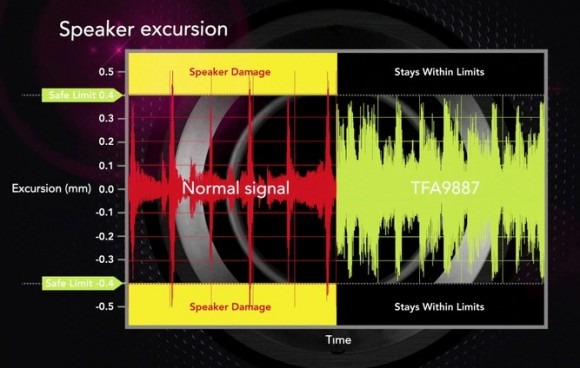NXP Semiconductors Boosts Smartphone Speakers By 5x
The annoying group of teenagers blaring music from their phones at the back of the bus are set to become even more frustrating if NXP Semiconductors has its way, with new tiny speaker tech promising huge increases in output. The TFA9887 can deliver a 5x increase in loudness, NXP claims, pushing in excess of 2.6 watts RMS into micro-speakers previously limited to just 0.5W. Best of all, the company says it can do so with more sound accuracy and no potential for damage to the speakers themselves.
That's because the new NXP audio system packs far more monitoring tech than previous versions. New circuits track speaker performance using adaptive excursion control, tracking how much the speakers cone is physically moving to make sure that it's within design limits, while temperature monitoring keeps a metaphorical eye on the voice-coil to make sure it's not overheating.

Thanks to all that, one of the biggest compromises usually involved in mobile speakers can be avoided. Usually, device manufacturers are forced to trim bass and cut maximum volume, just in case a particularly meaty bassline ruptures the speakers. The TFA9887, however, optimizes the audio signal based on the movement of the speaker, allowing its full capabilities to be utilized without ever driving it beyond its limits.
"An advanced clip avoidance algorithm monitors audio performance and prevents clipping, even when the power supply begins to sag. Bandwidth extension increases the low frequency response well below speaker resonance. And an intelligent DC-to-DC boost converter maximizes audio headroom from any supply level despite battery undervoltage. The TFA9887 automatically adapts to any changes in the speaker – including ageing, damage to the enclosure, and blocked speaker ports – helping to optimize performance and maintain the desired sound quality." NXP Semiconductor
Bundled tools allow manufacturers to tweak their audio output to make best use of the processing tech. NXP is sampling the new audio chip and demo boards based upon it, though there's no telling when it might end up in mobile devices on store shelves.
